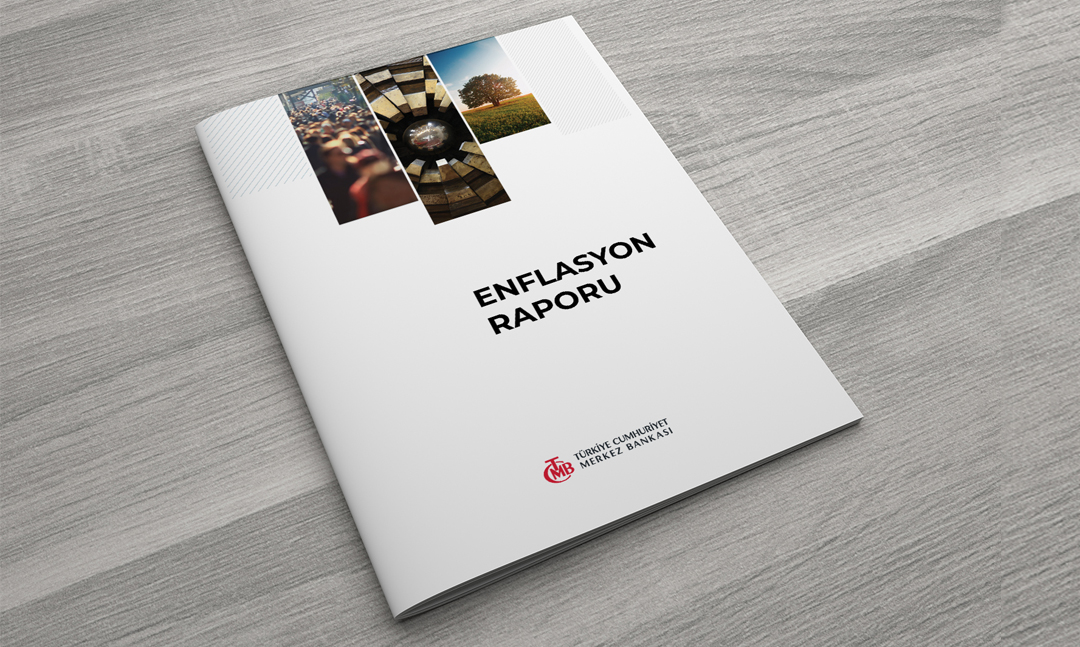In the second Inflation Report presentation of the year, Central Bank Governor Fatih Karahan announced that the year-end inflation forecast was raised to 38%. The year-end inflation forecast for 2024 was 36% in the November report and 33% in the July 2023 report. The Bank kept the year-end inflation forecasts for 2025 and 2026 unchanged at 14% and 9%.
Here are the highlights of CBRT Governor Karahan’s speech:
The main objective of the Central Bank is to achieve and maintain price stability. We closely monitor pricing behaviour and inflation expectations.
We are determined to maintain our tight monetary policy stance until inflation falls to levels consistent with our targets. We will definitely not allow a permanent deterioration in inflation expectations.
Attention to commodity prices
Global growth is projected to increase slightly in 2024. Commodity prices have recently seen a generalised increase.
Geopolitical developments and tight policy are prominent global risk factors. Global inflation continues to hover above targets, and central banks maintain monetary tightness.
Expectations that central banks of advanced economies will cut interest rates later and more slowly have strengthened. Portfolio outflows from emerging economies have been observed recently.
The output gap will be an important component of the disinflationary process
While domestic demand remains resilient, there are some signs of normalisation. The negative contribution of net exports to growth has diminished.
We closely monitor the effects of monetary tightening on domestic demand through various indicators. Supply conditions follow a milder course compared to demand conditions.
PMI data point to a moderate weakening in production in the second quarter.
Aggregate demand conditions remain inflationary.
The output gap will be an important component of the disinflationary process.
Current account balance continues to improve
Tight monetary policy will stabilise demand
In the second half of the year, we anticipate that domestic demand will weaken due to the lagged impact of monetary transmission and the current account balance will continue to improve.
Consumer inflation above the forecast range
Consumer inflation was realised above the projected forecast range. Inflation indicators point to a decline in the underlying trend. Inflation ended April at 69.38%, 0.9 points above the forecast range.
Contrary to our forecasts, aggregate demand conditions remained strong in the first quarter of the year, while credit conditions improved. Real wage increases supported demand.
Prices of services push the underlying trend of inflation upwards
Prices of services play a significant role in the high course of the underlying trend. Recently, price increases in the services group have been stronger than in other groups.
Despite slowing down on a monthly basis, services inflation remains high. Services inflation is also above headline inflation in advanced economies.
The upward trend in house prices is slowing down
We closely monitor developments in the housing market as a leading indicator. The upward trend in house prices is slowing down.
The upward trend in house prices hovers below the upward trend in consumer prices. We assess that the slowdown in house prices may limit the increase in rents with a lag in the upcoming period.
We expect the gap between market expectations and our target to close
The impact of monetary tightening on expectations is closely monitored. The convergence of inflation expectations to the forecast range is critical for disinflation.
We anticipate that our decisions will lead to an improvement in inflation expectations and the gap between market expectations and our intermediate target will close.
The monetary stance has been tightened significantly. Steps were taken to support and strengthen the monetary transmission mechanism.
We will use sterilisation tools effectively
Excess liquidity is sterilised through quantitative tightening. We will closely monitor liquidity developments and use sterilisation tools effectively when necessary.
Monetary tightening is reflected on financial markets quickly and strongly
The level of loan rates will support the slowdown in domestic demand. Consumer loan growth is weakening.
Recent data show that the shift from FX deposits to TL deposits has accelerated. Our monetary policy stance and macroprudential framework will ensure that deposit rates remain at levels that will support the switch to TL and increase savings.
The share of TL deposits continues to increase. We observe that foreign currency loans have increased recently. In the last eight months, the share of TL deposits increased from 32% to 44%, while the share of FX loans declined from 26% to 14%.
Inflation forecast components:
CBRT’s average oil price forecast for 2024 is 86.4 USD (previous 83.6 USD).
CBRT’s average oil price forecast for 2025 is 82.3 USD (Previous 81.2 USD)
CBRT’s end-2024 food price forecast is 35.5% (Previous 34.6%)
CBRT’s end-2025 food price forecast is 15.0% (Previous 15.0%)
CBRT’s forecast for the change in average import prices for 2024 is 0.8% (Previous -0.1%)
CBRT’s forecast for the change in average import prices for 2025 is 2.6% (Previously 0.7%)
We forecast inflation to be 38.0% at the end of 2024 (Previous 36.0%)
We forecast inflation to be 14.0% at the end of 2025 (Previous 14.0%)
We forecast inflation to be 9.0% at the end of 2026 (Previous 9.0%)
